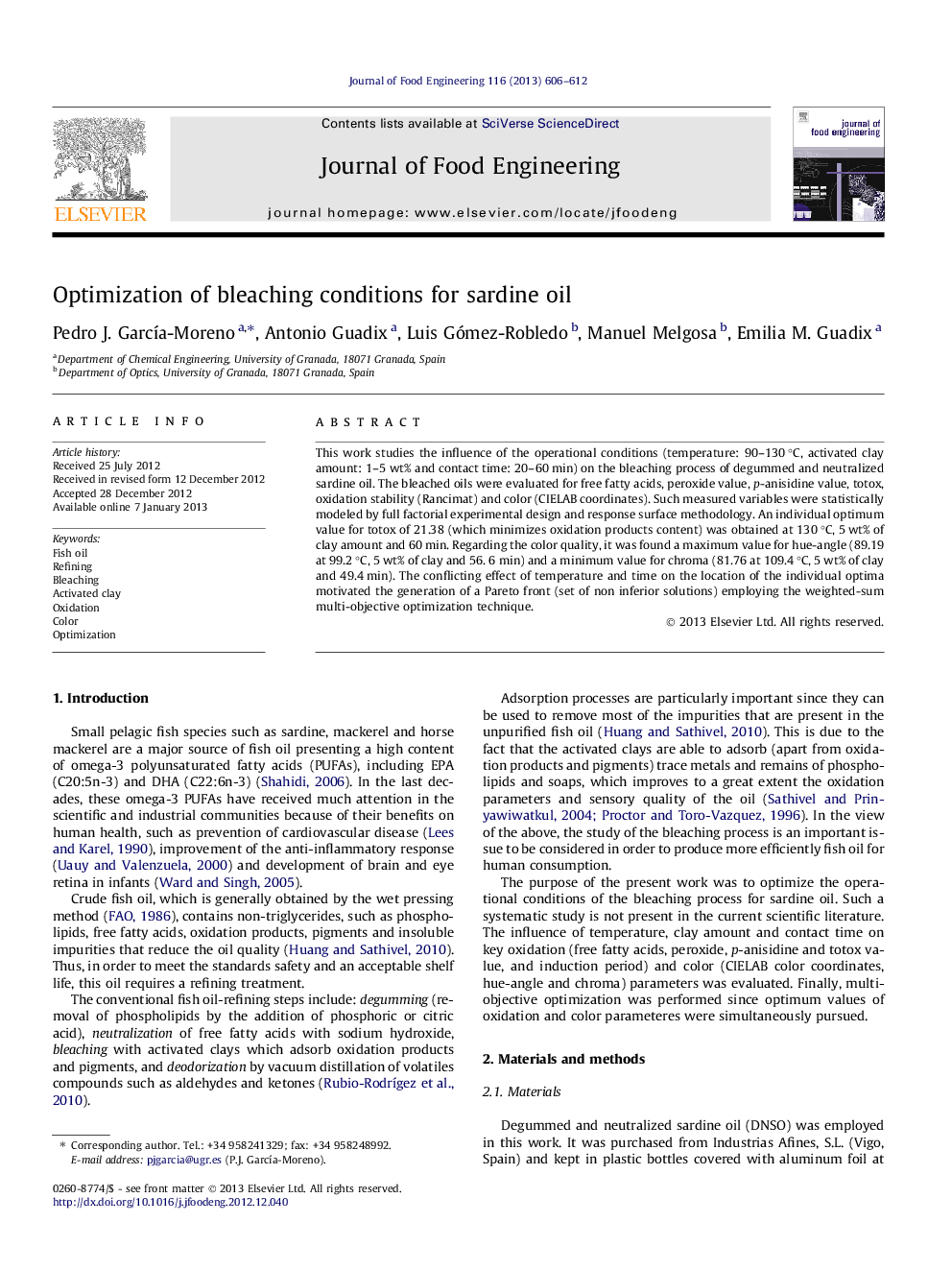| Article ID | Journal | Published Year | Pages | File Type |
|---|---|---|---|---|
| 223491 | Journal of Food Engineering | 2013 | 7 Pages |
This work studies the influence of the operational conditions (temperature: 90–130 °C, activated clay amount: 1–5 wt% and contact time: 20–60 min) on the bleaching process of degummed and neutralized sardine oil. The bleached oils were evaluated for free fatty acids, peroxide value, p-anisidine value, totox, oxidation stability (Rancimat) and color (CIELAB coordinates). Such measured variables were statistically modeled by full factorial experimental design and response surface methodology. An individual optimum value for totox of 21.38 (which minimizes oxidation products content) was obtained at 130 °C, 5 wt% of clay amount and 60 min. Regarding the color quality, it was found a maximum value for hue-angle (89.19 at 99.2 °C, 5 wt% of clay and 56. 6 min) and a minimum value for chroma (81.76 at 109.4 °C, 5 wt% of clay and 49.4 min). The conflicting effect of temperature and time on the location of the individual optima motivated the generation of a Pareto front (set of non inferior solutions) employing the weighted-sum multi-objective optimization technique.
► Degummed and neutralized sardine oil was bleached using acid activated clay. ► Operational conditions were temperature, clay amount and contact time. ► Measured variables include oxidation and color parameters. ► A full factorial experimental design and statistical modeling were performed. ► A Pareto front was generated using weighted-sum multi-objective optimization.
